I test the latest AI for graphic design: which is best?
The top AI for graphic design to speed up visual tasks.
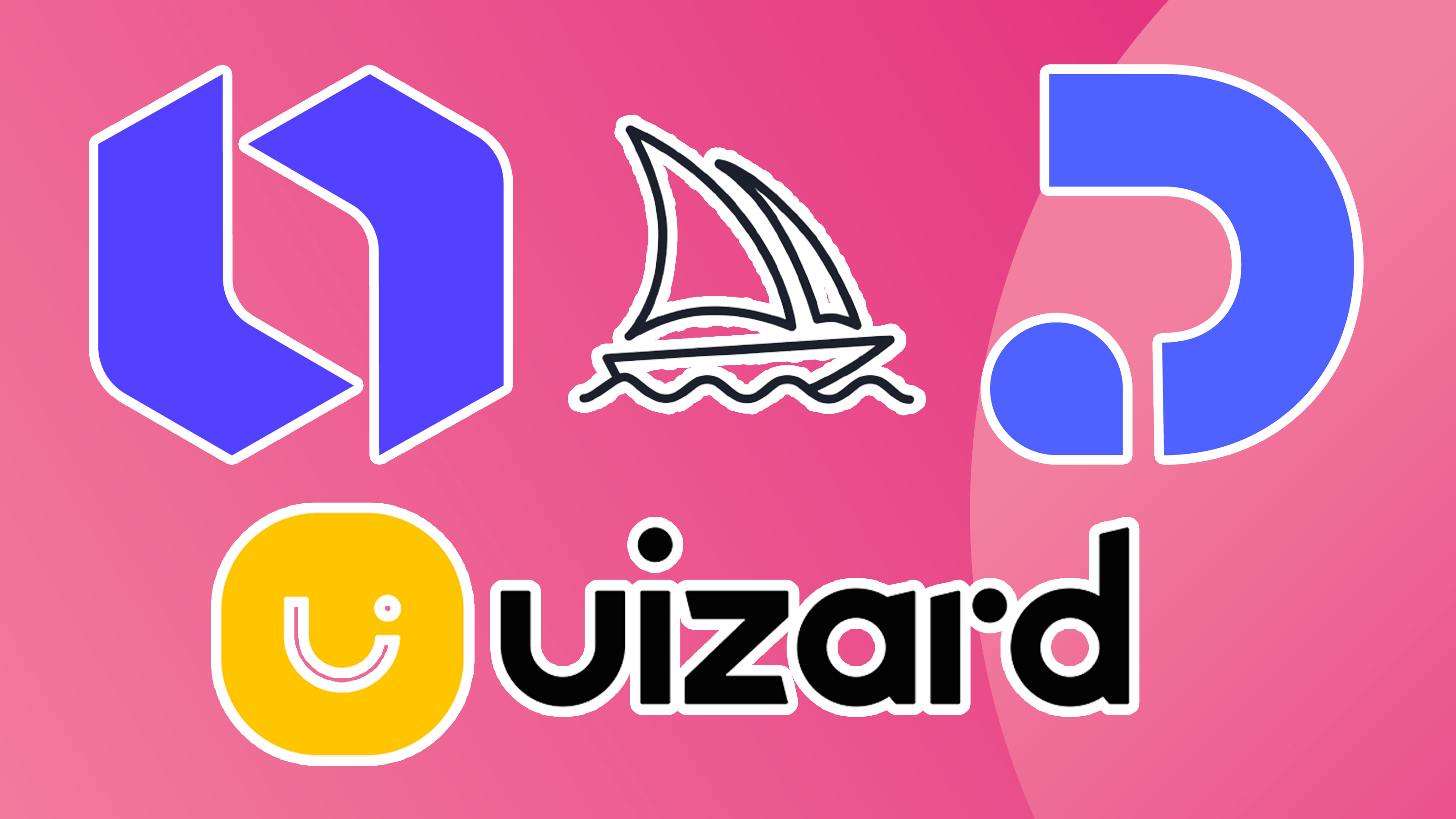
The best AI for graphic design can streamline your workflow and leave more time for creativity or taking on more projects. Tedious, time-consuming image and video editing tasks can now be handled with a single click. The blank document phase of creation is becoming a thing of the past – if you’re not sure where to start, generative AI can create content to develop.
If you haven’t tried out that many generative AI tools and aren’t sure what they can do for you, take a look at some of the ways creatives are using AI in their art and design workflows. It’s worth remembering that some AI tools, particularly those that generate images, are controversial, and the legal and ethical landscape around them is still being worked out. Most generative AIs have been trained on images without the consent of the rights holders, and can produce output that clearly violates copyright. If in doubt, these are the biggest issues facing AI right now, good and bad.
So many AI-powered tools have popped up recently, it can be difficult to know which ones are worth trying out. Below we explore five of the best standalone AI for graphical tasks, including UI design, logo design, presentation making and image generation. Some of our picks are very new, so they can be a bit glitchy and a few of their features are still in beta - but you can expect them to improve in the near future.
Best AI for graphic design: tested
Rather than simply list a bunch of new AI that looks good, I've spent hours with each AI tool on my list and have tested them in real world scenarios. Every day there are dozens of new AI launching, so it's more important than ever that you know the AI I've selected have been used and tested.
Looka
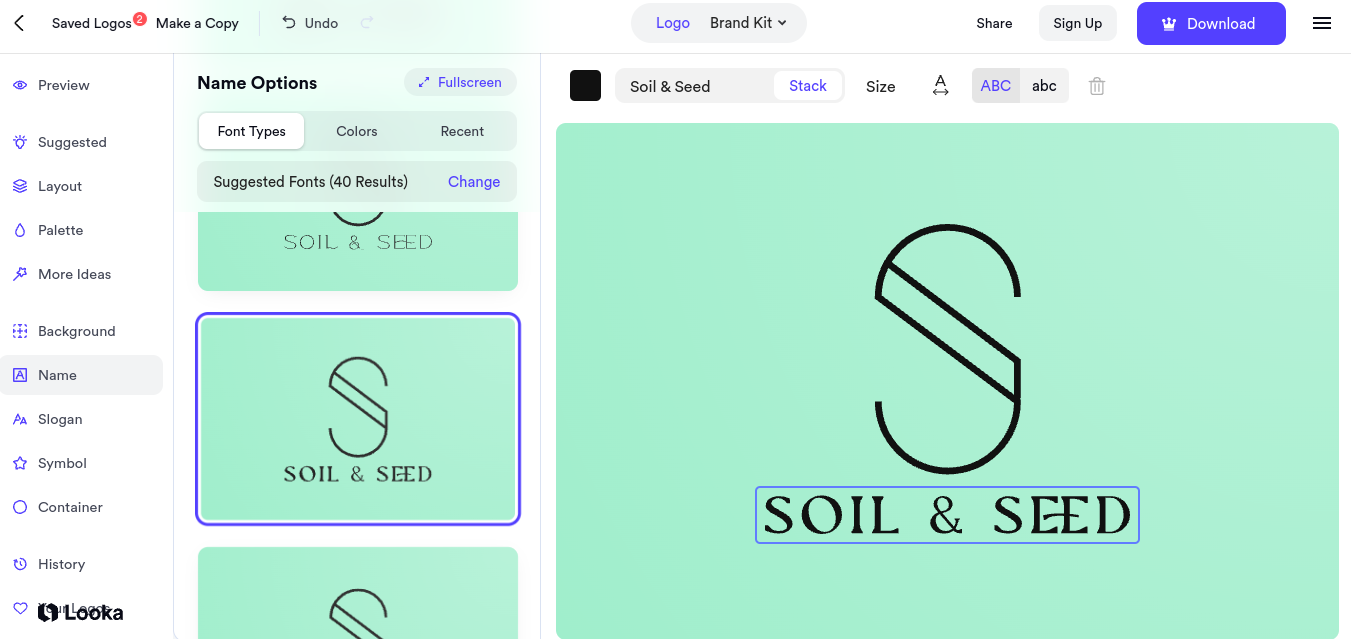
Looka uses AI to design a logo, full brand kit and website for your company or organisation. It’s very simple to use: just enter your company name, choose the area of business, and give it an idea of the style you want by choosing a colour scheme and selecting your favourite logos from some examples.
Based on your information, Looka comes up with some simple logos and wordmarks that you can then customise by tweaking fonts, letter spacing, background colour and so on. It even creates some really good website options. In my test, it wrote suitable landing page text, pulled in great imagery, and had a nice selection of different layouts. (For more on AI for design, read our interview with Canva founder Cliff Obrecht.)
You can buy the logo as a one-time purchase, or pay annually for the full brand kit including email signatures, business cards, social profiles and website. When you buy these materials you get high resolution files with colour, black and white, and transparent backgrounds suitable for online and print. There are a range of price plans to suit different needs.
Get the Creative Bloq Newsletter
Daily design news, reviews, how-tos and more, as picked by the editors.
What is Looka AI it good for?
Looka is a great starting point for logo design; you can get a range of decent options in front of you with just a few clicks. It creates a full brand kit based on your logo, and it does a great job of making websites.
What are the limitations of Looka AI?
Sometimes the logos are a bit basic and there's the occasional misfire. For example, in my test to create a logo for a gardening business the AI created a design using a necktie.
Uizard
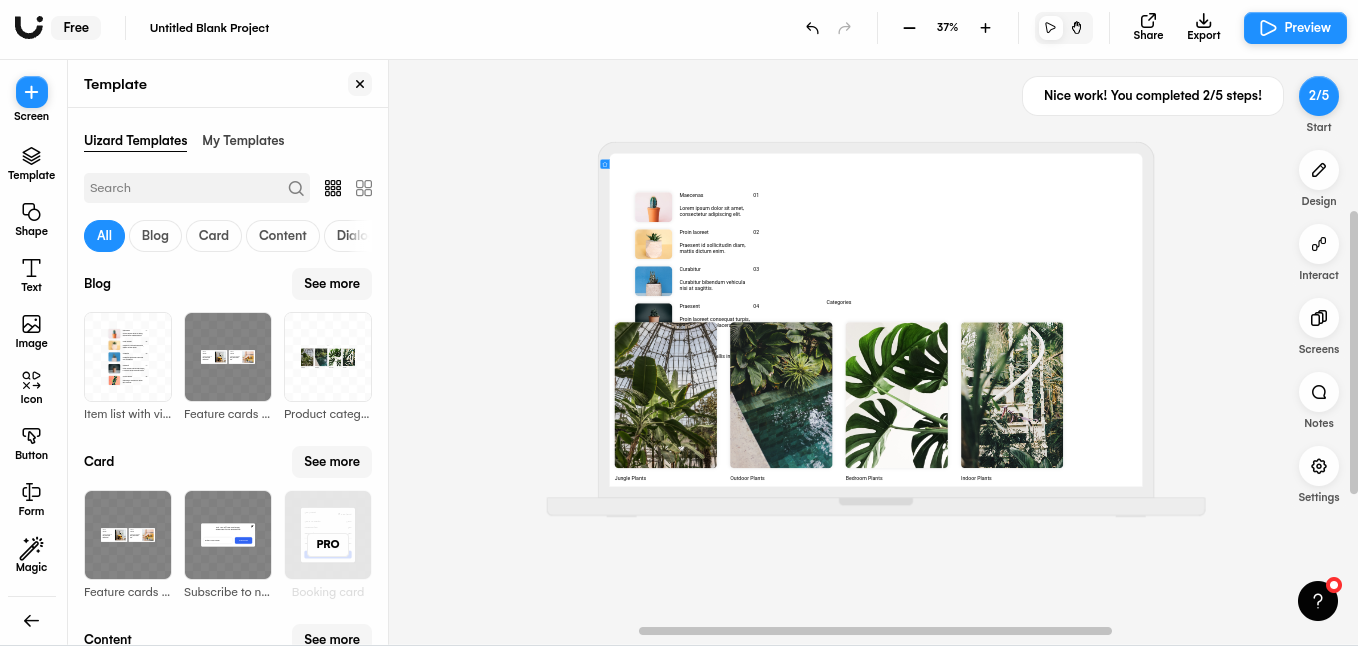
Uizard is the AI tool you need if you’re a designer building user interfaces for mobile or web. This is a professional-level AI and is a major time-saver as it automates many of the steps you may be used to doing by hand. It's worth noting Uizard is actually a spread of AI tools, including those for UI templates, UX design, AI design and more.
One of the most impressive features is the Uizard Autodesigner, which designs full interfaces based on simple text prompts. For example, you could ask it to design a dating app that matches people based on their star sign. With just this short brief, Autodesigner comes up with a name, logo and all the typical screens that a dating app would use, including suitable placeholder text.
But this example isn’t just an inert design plan – all of the screen interactions you need are also generated automatically. Everything can be edited and refined, and you can swap in screens from the component library or elsewhere.
There are other starting points for your designs, including the templates library, or you can enter a URL to use as inspiration. Like any good design utility, it’s a collaborative tool so you can invite colleagues to give feedback and iterate.
What is Uizard good for?
Any kind of UI design – it will generate all of the standard interface screens for an app, and create suitable text. The strength of this AI is it delivers what you need, ensuring your role is to gate-keep the creative aspects of what's needed.
What are the limitations of Uizard?
None, really! You will always have to do some customisation to get exactly what you want, but all the tools you need to do that are present.
Decktopus
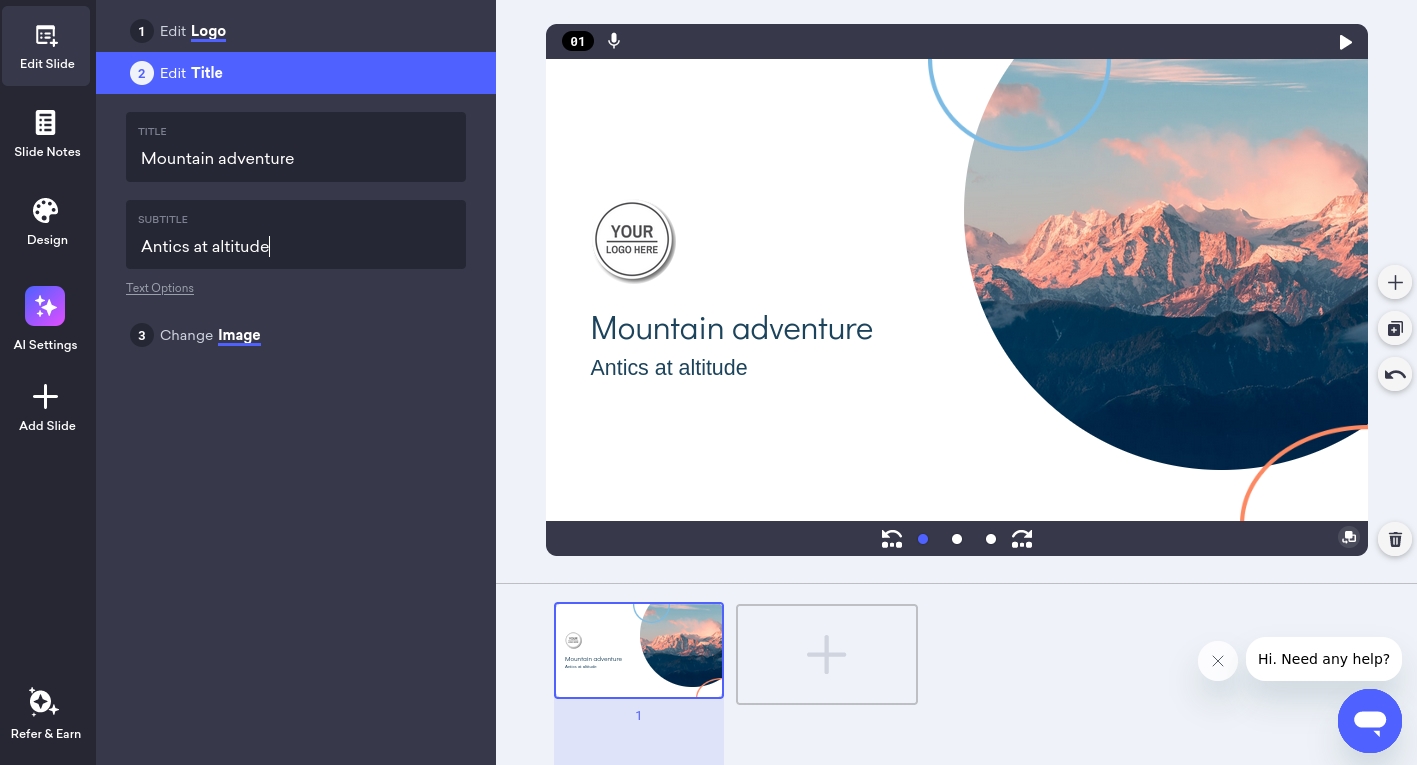
Decktopus is a powerful presentation-building tool that uses AI to generate content. To begin your project, enter a presentation title and target audience and Decktopus will generate a series of slides based on this information. It’s great for making a start to your presentation, as the generated content provides a solid structure for you to build on.
There are a number of slide designs to choose from, all of which can be customised. Rather than using AI to create images, Decktopus suggests royalty-free artwork from Unsplash, which avoids any of the potential licensing problems that might come with AI-generated imagery. You can also get it to generate slide notes, and it’s possible to embed websites and videos.
In my test, Decktopus produced suitable text for headings and sub-headings, and generated information that was appropriate for the topic. Material was presented differently from one slide to the next so all of the design and visual interest was taken care of, leaving you to focus on adding extra detail.
What is Decktopus good for?
In my test I found Decktopus generated a useful base of information and made layout and design automatic and easy to handle. It performed well.
What are the limitations of Decktopus?
Decktopus can be glitchy – my first attempt generated content in two languages at once. But problems like this can be resolved by hitting Regenerate and enable the AI to work itself out.
Midjourney
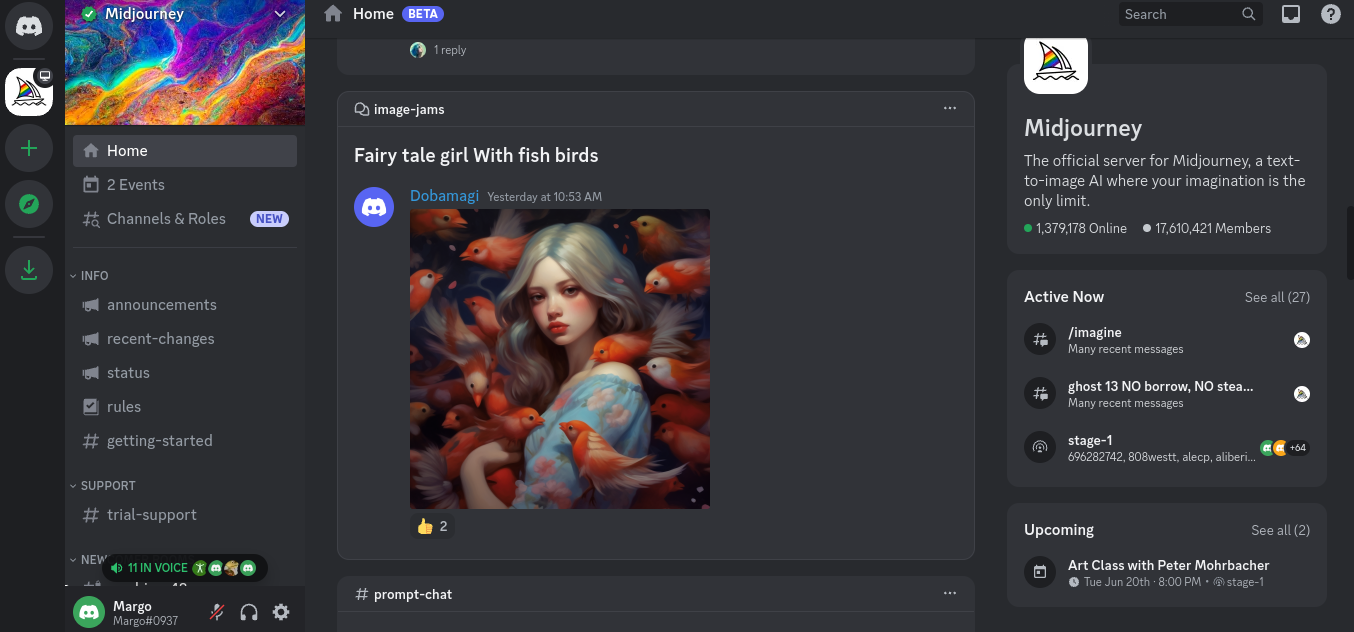
Midjourney generates remarkably high-quality images based on text prompts. The way it works is a little unusual in that it doesn’t have its own interface; it runs as a bot on Discord, an instant messaging platform. So to use it, you need to create a Discord account, join a Midjourney channel, and send requests to the bot.
Using Discord can mean getting what you need from Midjourney takes a bit longer to get going, but the great advantage of this is that you can learn how to use it by watching the prompts that other people enter and seeing the results they get. (Read our guide to the best social media platforms for artists and designers for more apps like Discord.)
While Midjourney and more of the best AI image generators are capable of great things, they are controversial because they have trained their models on images without the consent of the rights holders. For this reason, it’s important to use them ethically. For example, D&D artist Greg Rutkowski has had his art scraped; his hame is now a prompt.
Midjourney is great for idea generation and making moodboards and reference images for your design project, but it's probably unethical to use it to create content that you would usually pay for. It’s also unwise to use generated images for commercial purposes as there’s a chance they may infringe someone’s copyright. If you want to use AI generated images commercially, check out Adobe Firefly.
What is Midjourney good for?
In a professional setting, Midjourney is fantastic for augmenting the idea phase of your creative process and for generating mood boards and reference imagery. Doing more raises ethical questions, particularly after Marvel's Secret Invasion AI opening credits caused controversy.
What are the limitations of Midjourney?
Text-to-image generators that have been trained on images without, in the main part, the consent of rights holders and so are controversial. It’s unwise to use the output for commercial purposes. There are ethical generative AI coming soon, such as Shutterstock AI that pays contributors.
Stockimg.ai
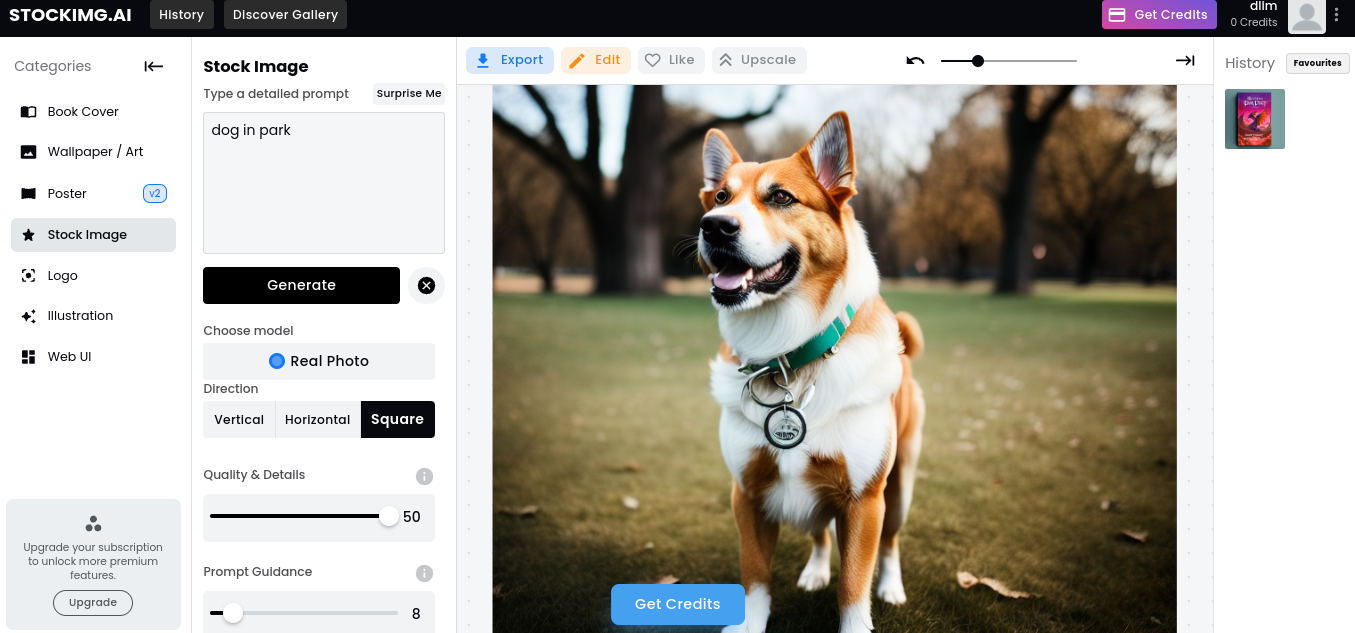
Stockimg.ai is an image generator that’s quicker to get started with than Midjourney. It has a very simple interface that helps you to create images for different formats: book cover, poster, wallpaper, logo, illustration or web UI.
By dividing the image types into categories, the AI has some guidance around what it is supposed to be generating, so you don’t need to specify that in your prompt. Once you have generated your image, there’s an editing screen with drawing tools that lets you apply different filters and add a watermark.
In my test I found most of the image categories worked well, but the book cover and web UI ones have a tendency to generate gibberish text, which probably makes the image useless for most purposes. But if you’re just using it for idea generation, it might not matter. And as this is a new tool, you can expect these quirks to be ironed out in the coming months.
What is Stockimg.ai good for?
If you want to try out AI image generation quickly with an easy-to-use interface, Stockimg.ai delivers.
What are the limitations of Stockimg.ai?
Sometimes Stockimg.ai generates gibberish text, so the book cover and web UI features might not be that useful to you.
What's the best free AI for graphic design?
While not on my list, Canva now has a free AI image generator. So while the main app is still non-AI, there's an element of generative AI added into this established app. Read our Canva review for more.
What is the best free AI art generator?
There are lots of AI arty generators around now, most are free to use but if you want to create more complex images, or art for commercial uses, you'll need to spend. However, Midjourney and DALL-E 2 are free to use and worth experimenting with. (Read our guide to how to use DALL-E 2 to get started.)
Is using generative AI ethical?
Is generative AI ethical? This is the big question everyone is asking. While some AI generators are seen as unethical (for example, Stable Diffusion, Midjourney and DALL-E 2) some are promising to monitor copyrights and even pay artists for their work, such as Adobe Firefly and Shutterstock AI. (Read our guide to how to use Firefly in your workflow.)

Thank you for reading 5 articles this month* Join now for unlimited access
Enjoy your first month for just £1 / $1 / €1
*Read 5 free articles per month without a subscription

Join now for unlimited access
Try first month for just £1 / $1 / €1

Tanya is a writer covering art, design, and visual effects. She has 16 years of experience as a magazine journalist and has written for numerous publications including ImagineFX, 3D World, 3D Artist, Computer Arts, net magazine, and Creative Bloq. For Creative Bloq, she mostly writes about digital art and VFX.
